Your pup’s bad breath can be attributed to tartar build-up along with a number of bad bacteria in your dog’s mouth.
At this very moment, living microorganisms reside in your dog’s mouth. And they hold the key to your dog’s dental health. The sum of these bacteria is referred to as the oral microbiome, and not only is this community complex, but they’re responsible for protecting your pup’s mouth from outside pathogens like that bad bacteria.

Unfortunately, that bad breath is more than just a nuisance for the nose, it’s a by-product and a rather clear indicator of who’s living in the mouth.
If you want to know why your dog’s breath smells and better yet, how to fix it, you’ve got to go beyond the smell and get to the root of your pup’s issues.
On The Agenda
Why It’s Important to Focus on More than Just Bad Breath
When bad bacteria move in, bad breath is just one of many far-reaching effects they can have on a dog’s health.
Plaque turns into tartar, it nestles up right at the gum, irritating the gums and causing inflammation. The inflamed gums result in gingivitis (think about that pain when the corner of a chip pokes your gum– yeah, ouch).
With gum disease, you’ll smell it before you see signs, but when you do see other symptoms, they include redness, swelling, sensitivity, and bleeding. (Peek in your whisker-toter’s mouth and check for these signs.)

Once tartar accumulates, it moves under the gums and creates small pockets while pulling the gum from the teeth. Bacteria get trapped in these small pockets in the mouth, which drives the disease process. This develops into an irreversible condition called periodontal disease. (Remember to take a deep breath here. It’s not time to panic.)
Oral Health Affects A Dog’s Health As A Whole
The bacteria that contribute to tartar can also enter the bloodstream through the red, swollen, and bleeding tissue, affecting more than just the mouth.
Oral bacteria– the bad microbes that take up residence in your dog’s mouth– get flushed through the bloodstream by way of the inflamed or bleeding tissue and that leaves the immune system to rid the body of these bacteria. The more stressed your dog’s immune system becomes, the more vulnerable he is to serious health concerns, including gum disease and heart disease, per recent research.

Still, this is not the time to throw your hands up in surrender. No matter their age or amount of tartar, your dog will absolutely benefit from an effective dental routine.
It’s truly never too late to start– it’s just about understanding the root cause of oral issues and then addressing them head on.
What Creates Tartar Build-Up
Those hard brown balls in your dog’s dish? Yep, you’ve got your culprit.
And we know the common belief with kibble and dental care, but before you say it, NO kibble does not clean a dog’s teeth.
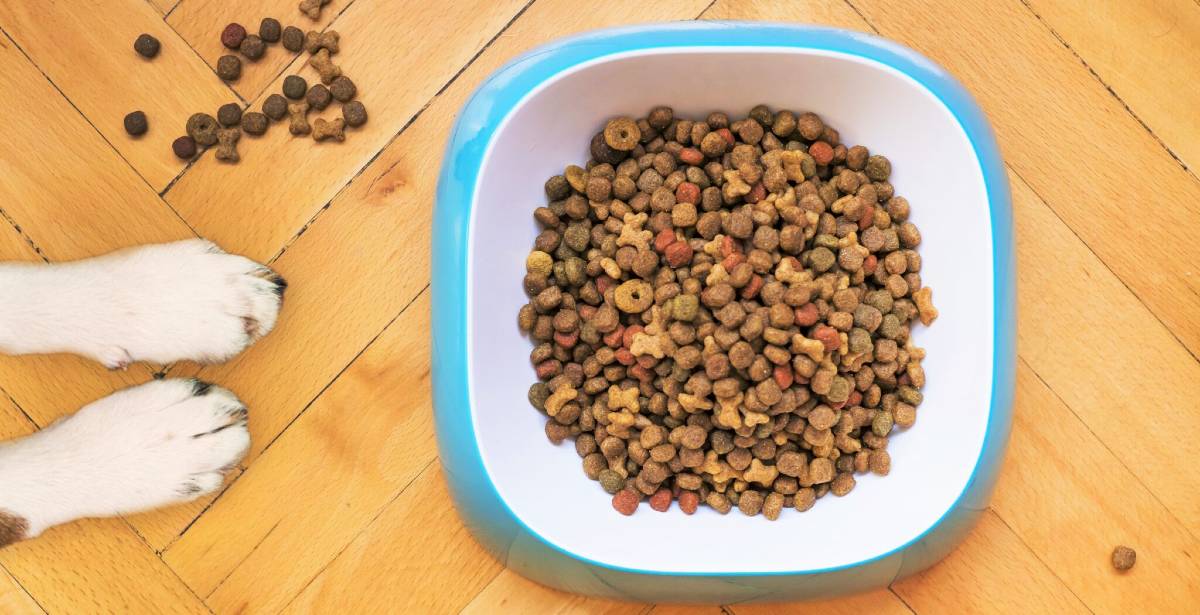
See, the kibble/crunch argument isn’t even half of it. If you’re looking for the true cause of the bad bacteria and the tartar build-up, point the finger at CARBOHYDRATES. For you foodies, that means there are far too many grains and starches in kibble.
The issue is that all kibble-based diets have such high amounts of carbohydrates or sugars (it’s needed to form the ball and it happens to be cheap), and it is a problem for a few reasons.
Your dog, the carnivore, is not designed to eat that
As scavenger carnivores, dogs are designed inside and out, from the tip of that cute snoot to the end of their tails, to consume only small amounts of carbohydrates.
- Those teeth– they are tightly aligned, meant for ripping and tearing prey
- Their digestion– it comes with a shortened gastrointestinal tract to move raw meats through quickly
- Their mouths– little to no salivary amylase, an enzyme in saliva that breaks down ingested sugars or carbohydrates
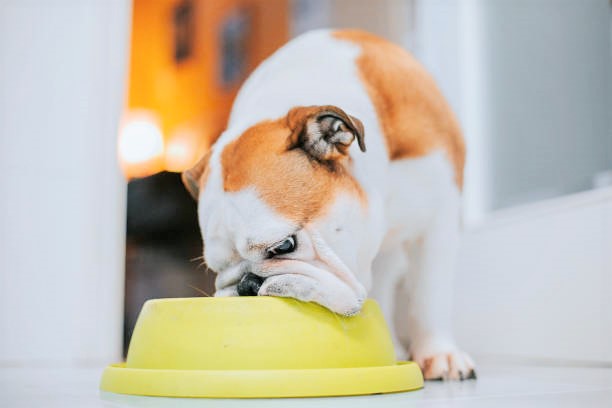
So, when your pup tucks into a bowl of kibble, the small amount the salivary amylase (an enzyme in saliva that breaks down ingested sugars or carbohydrates) is exhausted quickly and can’t break down those carbs & sugars effectively and that means it sticks to his teeth.
Carbs & sugars = dental tartar = a feeding frenzy for bad bacteria’s growth & putrid breath
We’re circling back to the complex community of oral flora in your dog’s mouth because those bad bacteria– they thrive on the excess carbs and sugars.
The kibble feeds the harmful bacteria in your pet’s mouth, multiplying and growing, and quickly outnumbering the good bacteria charged with protecting your four-legger’s mouth.
Put in simple terms. Feeding kibble is a spoonful of sugar on a cavity, kerosene on a burning building, if you will. So, to truly address foul breath, start with the bowl.
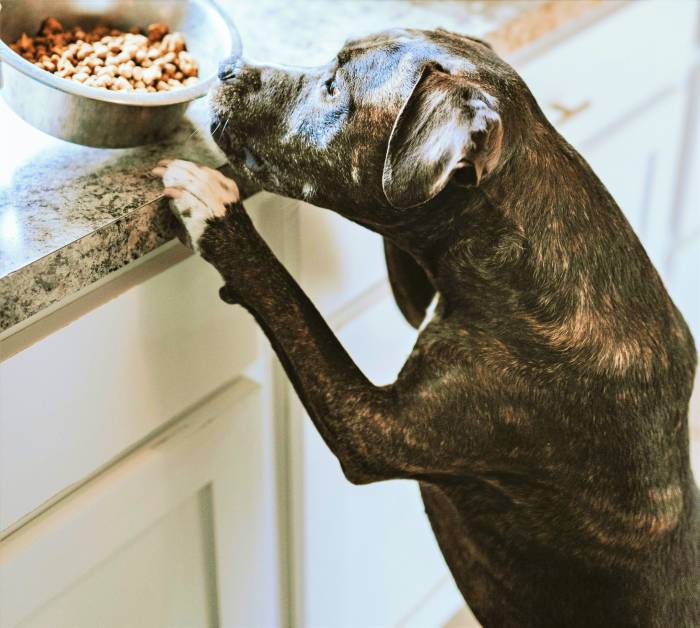
But, you still need a fix for that bad breath now– your dog needs a dental routine that can also prevent and address the existing tartar build-up and bad microbes below the gumline.
Why The Majority of Dental Health “Solutions” Aren’t Offering A Fix
You may already be using those popular green sticks or another mechanical chew in hopes of fresher breath. But the reality is they don’t seem to be making a dent. You aren’t seeing or smelling significant results for a few reasons.
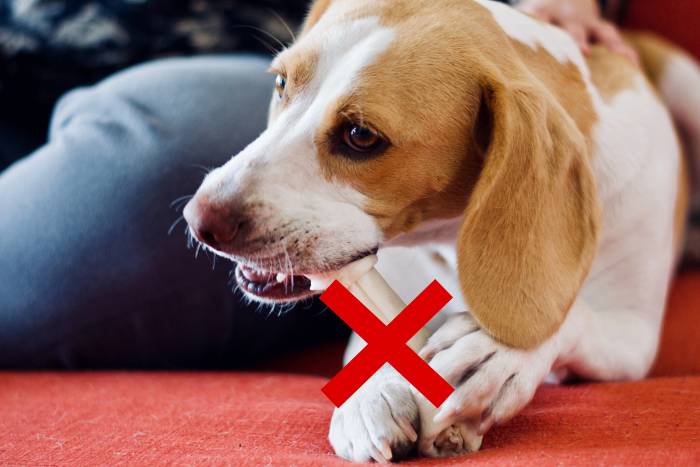
#1 Mechanical chews can’t get where it matters most
While mechanical chews can remove some plaque because of the mechanical action of chewing, it doesn’t get rid of that tough caked-on tartar at the gum line– the area that matters most (and as mentioned before, where massive implications for your dog’s heath stem from).
#2 These popular dental sticks feed bacteria
Not only are these dental sticks ineffective but they’re high in carbohydrates and/or starchy fillers that stick to the teeth and create the very tartar build-up and bad breath you’re trying to fix. Consider this “ingredient” deck and what you’re actually feeding your dog.

There is not one real food ingredient in the entire ingredient list and yet it STILL meets Complete & Balanced standards for dogs.
#3 These dental sticks have your dog chewing on essentially plastic
One of the most popular dental stick options on the market has no active ingredients to address teeth. Literally, none. Instead, it pushes the same rhetoric as kibble. That the act of chewing can do it all.
The ingredients boil down to form this hard piece of plastic –one that’s caused several deaths and recalls.
There’s a Better Way to Fix Bad Breath Now
While a daily dental routine like brushing keeps teeth clean and gums healthy– and it’s something we fully support–we also know that daily brushing is a stressful affair for many dogs.
That’s why there is another option for an effective daily dental care routine–defense by sea plant.
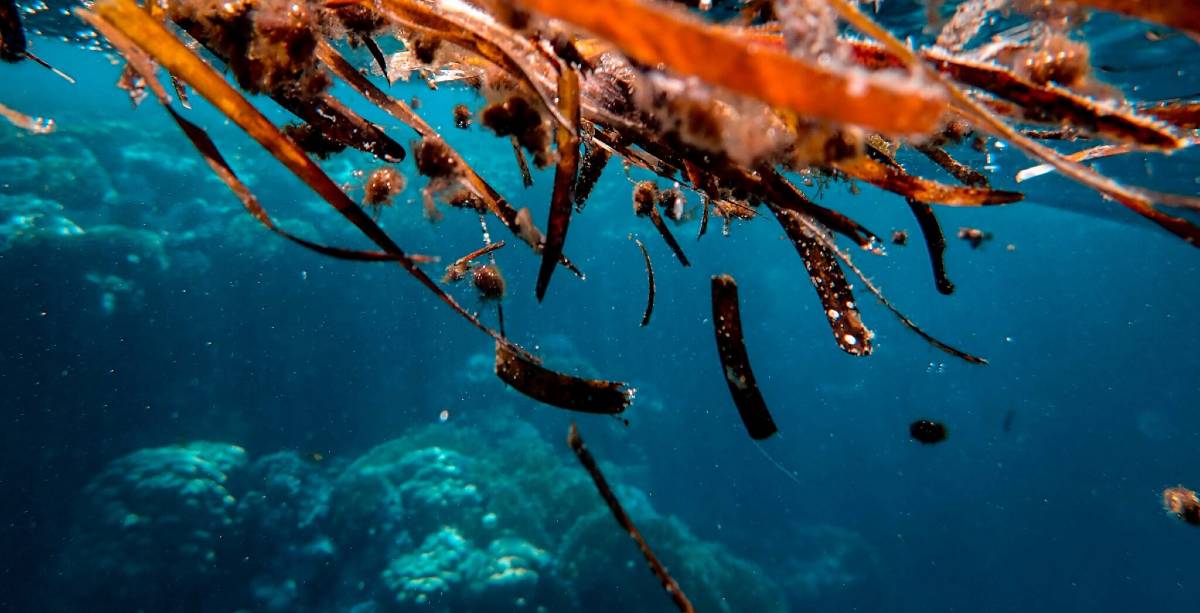
Sea plants accumulate a slimy biofilm on their surface, and scientists have found that these plants have a natural, protective mechanism to break down this biofilm. Because tartar is essentially layers and layers of biofilm, the mechanism can be used to combat the buildup of tartar.
One of the many benefits of using sea algae to break down biofilm is that it’s completely natural. With its osmotic effect, sea algae can soften the mineral-based tartar accumulations.
When used in conjunction with a raw, meaty bone (do not, repeat DO NOT use rawhides. just don’t do it.), the sea algae can help break away thick, caked-on tartar even faster.

A daily routine can be as simple as a sea algae dental treat that tackles issues like tartar build-up and bad breath head-on. If left untouched, teeth will start to decay, wearing away the gum and eventually the bone– it’s why every single dog needs a dental routine today. The only thing you have to do is start now.
Share this Post

Dr. Chris Besent
Chris Bessent, DVM, MSOM, Dipl. OM, L.Ac. has over thirty years of experience in veterinary medicine including certificates in veterinary acupuncture, veterinary chiropractic and veterinary Chinese herbology. Imbued with Eastern philosophy and the knowledge that food is the foundation of health, Dr. Bessent also received her degree in veterinary nutrition and began to formulate recipes fit for a carnivore from nothing but whole foods. Currently, she divides her time between the Simple Food Project and Herbsmith, both of which are owned and operated out of her facilities in southeastern Wisconsin.

Kayla Behling
Kayla is the Content Writer for Herbsmith. She has a cat named Professor Cat-Faced Meowmers, who goes by Kitty, and a goof of a dog, named Duck. She stays busy biking trails, playing board games, and searching for the next best craft beer.
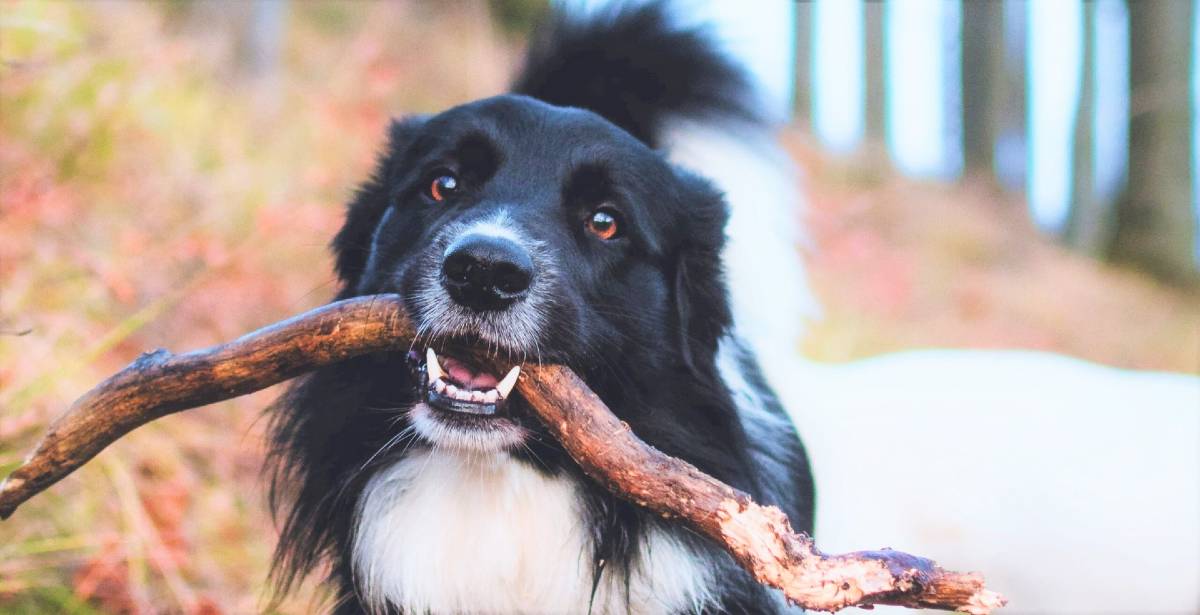

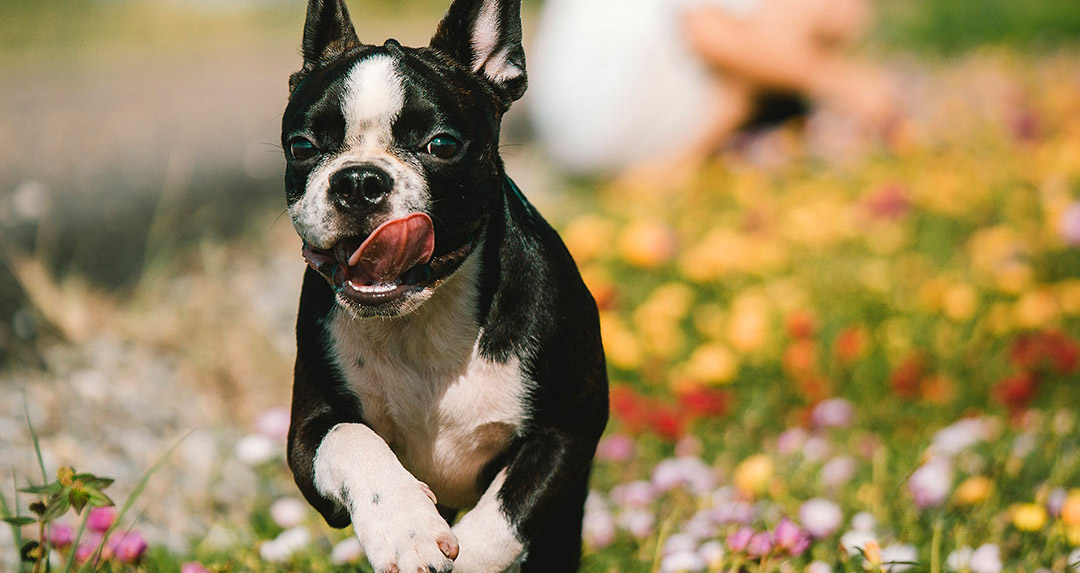

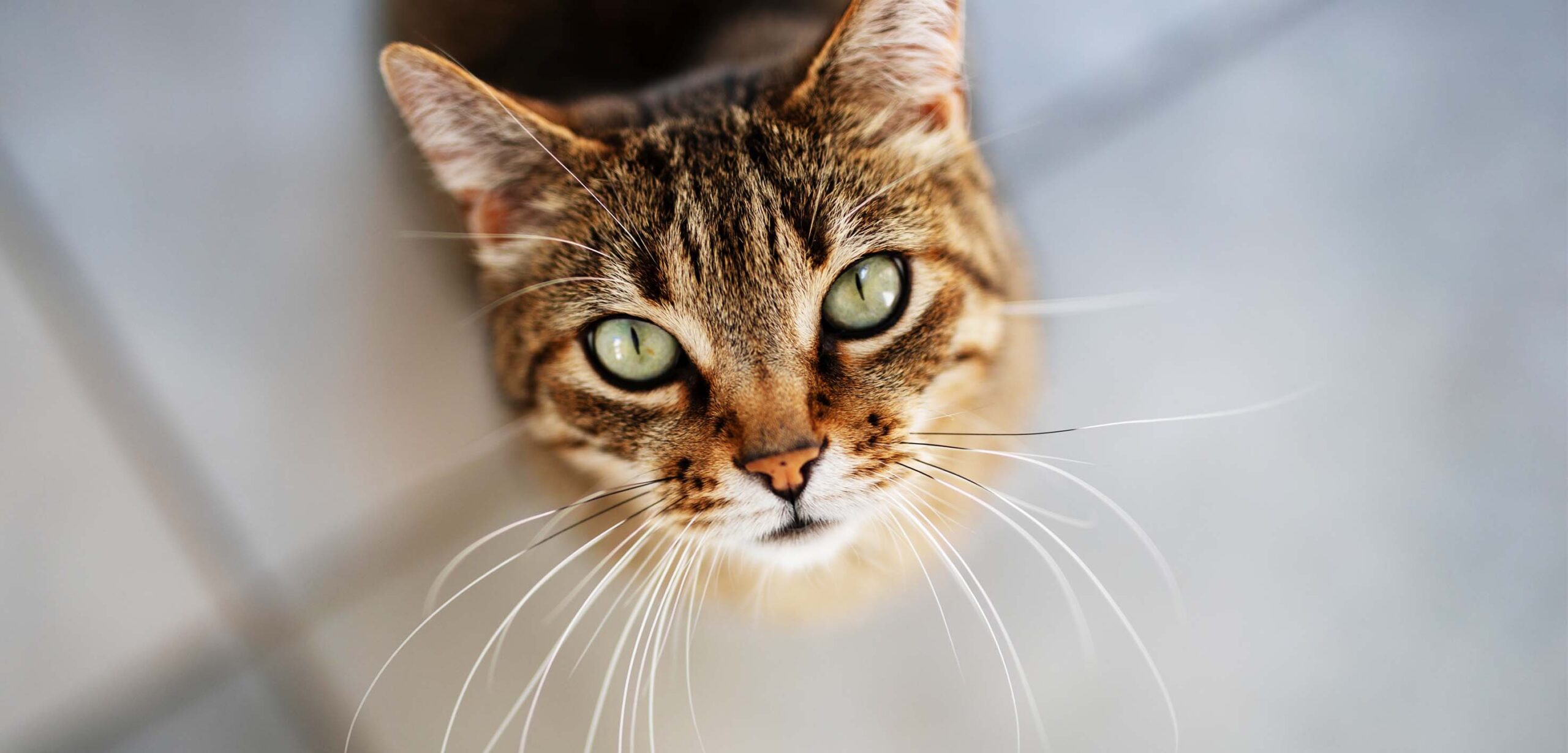
2 Responses
Of my two std Poodles, the one with the worst bad breath and dental build up is on a raw meat diet. She has been on two, one which was ground beef meat, bone and tripe, with a tablespoon of minced vegetables and the second is a prepared, Primal Beef Patties. She is allergic to chicken and turkey.
She hasn’t been on kibble except for a short time a year ago during which her bad breath stopped. I fully believe in feeding raw meat to dogs (except for the horrendous cost) but totally do not understand why her dental situation is so bad and her breath is foul. Any help would be appreciated.
Hi Vicki! Thanks for the question! The mouth is full of living microorganisms, which in turn protect them from outside pathogens like bad bacteria. But bad bacteria still exist even when feeding a balanced raw diet. Feeding good food alone can’t substitute for a daily dental routine but it is the foundation of oral health. And adding a daily routine can also tackle that existing tartar and bad-breath head on.
Comments are closed.